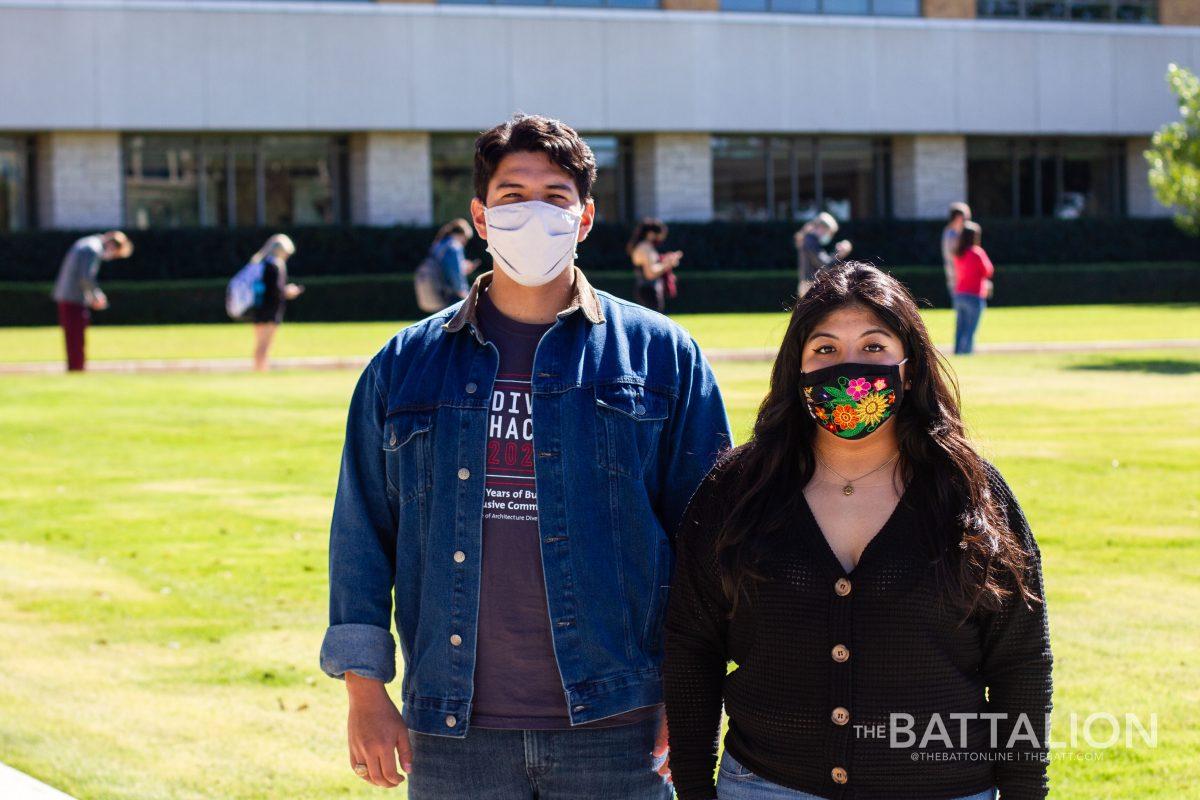Sofia Chunga Pizarro was 3 years old when her family moved from Piura, Peru, to the United States.
Now a sociology junior at Texas A&M, Sofia is one of over 600,000 DACA recipients who rely on an 8-year-old executive order for security from potential deportation.
DACA, or the Deferred Action for Childhood Arrivals program, is a 2012, Obama-era executive order that provides recipients a two-year reprieve from deportation proceedings, and work authorization for individuals who were brought to the U.S. illegally as children. DACA recipients must apply for and be approved to receive this temporary resident status, which may be renewed every two years.
Sofia became a DACA recipient in 2015, and she said the process was easy for her family because they had experienced the procedure once before.
“I first learned about DACA because of my older brother Carlo,” Sofia said. “He was the first one in our family to get it. My [experience] was much different than his because by the time I was able to get DACA, my family knew the process and it went a lot faster.”
With DACA benefits, Sofia was able to live a typical teenage life in College Station, getting a driver’s license and even a job.
Sofia’s brother, urban planning graduate student Carlo Chunga, said his immigration status never crossed his mind until he started applying for college and looking for information to use on his applications.
“Honestly back then, I didn’t think much of it,” Carlo said. “I didn’t really recognize that I was undocumented until it really hit me harder when I started applying to college later my senior year when I was getting documents together.”
Carlo became a DACA recipient in 2013, after a friend of a friend who worked in taxes gave his family some insight into the application process.
“A lot of the time we didn’t have money for lawyers and things like that, so they kind of became a resource for a lot of us to be able to apply,” Carlo said.
Some DACA applications can take months to be approved or denied. During the process, DACA recipients must submit their biometric information, like fingerprints, their signature and a photograph before their case is adjudicated and a verdict is rendered. It can take a total of seven to 10 months after filing for an applicant to be issued an employment authorization card.
“I think it took seven or so trials until we finally had the documents all together and sent in the application,” Carlo said. “Sometimes it’s a week, sometimes it takes months and for some folks that I know it did take months, which could be pretty frustrating.”
Although being a DACA recipient, or Dreamer, comes with benefits, Carlo and Sofia both said the temporary resident status they currently have comes with limitations that can be frustrating.
Sofia describes her ineligibility to vote as a feeling of uncertainty.
“I feel like I’m kinda in limbo because I’m unable to vote,” Sofia said. “Our lives depend on people who are able to vote and those who are not voting. We’ve seen the statistics and there are more people that don’t vote than do and that’s very scary because I feel like I can’t do this one thing that can determine my future.
“It’s already mentally stressful to be undocumented, but it’s especially worse when we don’t know if we could be deported three months from now.”
Carlo said the DACA community is often “tokenized” by politicians on both sides of the aisle.
“From local to the national level, they’ll talk about ‘those DACA kids,’ and that’s when I know they don’t really know much about us,” Carlo said. “A lot of the ‘kids’ that still have DACA — we’re in college. We’re not kids anymore; we’re young adults and already started our careers and some of us are getting ready to start their careers.”
Because every election can mean drastic changes to the politicians that enforce immigration policy, Carlo said voters should not only be thinking of DACA recipients when casting their ballots, but all undocumented immigrants.
“For many people in the DACA community the main priority is fighting for our parents because they are the ones who got us here,” Carlo said. “Whatever happens with DACA, they’re still vulnerable. They’re not able to get COVID[-19] relief funds or any federal relief so the people we focus on are the other 11 million people who don’t get the DACA benefits.”
According to a 2020 Pew Research Poll, for the over 600,000 DACA recipients and the 11 million undocumented immigrants in the United States, one political stance is common: a path to citizenship is necessary.
“DACA is supposed to be a temporary way for us to have security from being deported,” Sofia said. “What a pathway to citizenship means is that there is a path we will have to take that will end with us becoming naturalized citizens. This way we wouldn’t be in limbo if DACA went away because we’d already be citizens at that point.”
A life in limbo
November 3, 2020
Photo by Photo by Meredith Seaver
Urban planning graduate student Carlo Chunga and sociology junior Sofia Chunga Pizarro are two of the over 600,000 DACA recipients in the United States.
Donate to The Battalion
Your donation will support the student journalists of Texas A&M University - College Station. Your contribution will allow us to purchase equipment and cover our annual website hosting costs.




















